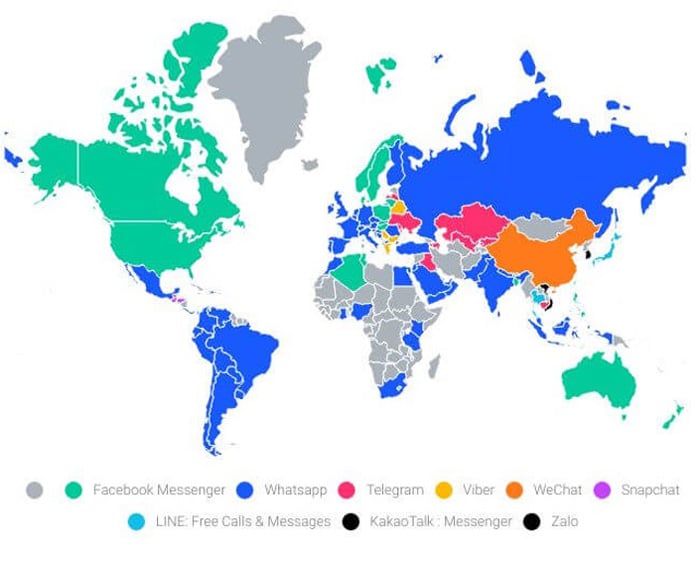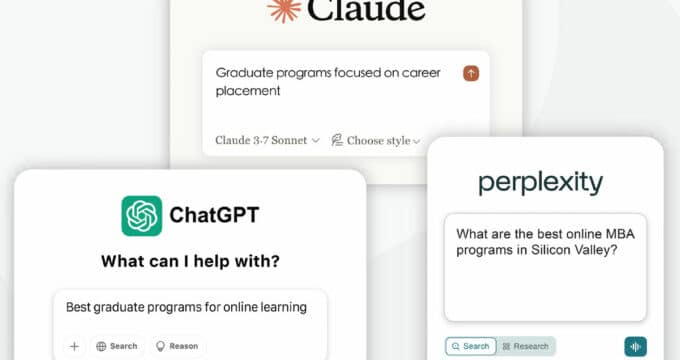The importance of SMS and messaging for converting prospective international students
- Prospective students are much more likely to want to text with educators and agents than speak on the phone with them when it comes to having questions answered quickly
- Students look at incoming texts almost immediately, while they may take hours to see an email
- SMS and messaging apps should be key parts of a multichannel marketing strategy to international students
We still call our parents, children, and best friends when we want a big, long chat about what’s going on in our lives. But otherwise, most of us tend to chat through the day with friends and family in quick, fragmented bursts. And we indulge in this habit by texting.
Our love of texting deepened during the pandemic when we felt so isolated. A 2021 survey of 2,000 Americans by Klaviyo found that:
- 59% said their phone was their lifeline during the pandemic;
- 51% said they increased texting in the past 12 months compared to phone calls (42%), email (42%), Facetime/video calls (41%), and social media messaging.
Klavio performed a generational segmentation that found that every generation — Gen Z, Millennials, Gen X and Baby Boomer — ranked text messaging as the number one most important communication platform on their cell phones.
The trend is global. From the UK and Australia to India and Kenya, young people would rather receive a text than a phone call.
Brands take notice
We text with friends and family, but we are also increasingly open to getting texts from brands. In 2022, Mitto, a leading provider of global omnichannel communications solutions, surveyed Americans about their favourite ways to hear from brands. For quick questions or confirmations, 46% preferred text messaging over email. This rose to 66% among Gen Z and Millennials.
The importance of incorporating text into a multichannel marketing strategy is clearly illustrated in the following statistics collected from numerous sources from AI-provider Quiq:
- The average SMS open rate is more than five times that of the average email open rate (98% vs. 17%, respectively).
- It takes the average person 90 minutes to respond to an email but only 90 seconds to respond to a text message.
- 74% of customers report an improved overall impression of businesses that interact with them via text messaging.
- 66% of consumers rank mobile messaging as their first or second choice to contact a company.
Quiq adds:
“SMS messages have an average response rate of 45%, compared with an average email response rate of just 8%. The reason conversion rates are higher with SMS is the simplicity of the marketing message. Text messages are short, they don’t include a lot of links and they are not bogged down with a lot of images. The call to action is clear and concise.”
For both educators and agents, the message (no pun intended) is hard to miss: Incorporating messaging into student recruitment is a no-brainer. Prospective students want answers to their questions almost immediately, and they want to hear from brands via text.
Higher Education Marketing (HEM) makes a good point about why texting is so popular among students researching where they want to study: “The easier it is to go from chatting with a friend to talking with an admissions advisor, the better.” HEM provides helpful tips for how to incorporate SMS texting into communications strategies, including using a CRM and marketing automation system for efficiency.
Use agents and in-country reps to send messages
When it comes to SMS messaging, educators marketing to prospective students abroad should consider delegating messaging to trusted agents and in-country reps. That’s because it is more difficult to successfully send messages across borders to some key markets. Infobip provides a helpful summary of compliance laws in various countries.
Messaging apps
As well as SMS messaging, social messaging apps are also used heavily by students the world over. The most popular apps in 2023 are WhatsApp, WeChat, Facebook Messenger, Telegram, Snapchat, and QQ, but there are also important home-grown apps in some key student markets to be aware of (e.g., Zalo in Vietnam, LINE in Japan).
Hootsuite provides a great primer on which messaging apps to consider in marketing strategies.
SimilarWeb provides a map of which messaging apps are dominant in which world regions in 2023. The map makes it abundantly clear why Facebook Messenger (shown in green below) is not the only app to consider when communicating with international students.

Focus on simple messages and calls-to-action
Research has shown that mobile users respond to calls to action in text messages more than any other marketing channel. Text is the optimal channel for announcing a discount, application deadline, or scholarship. Students will see the alert immediately, allowing them to act quickly on the offer or incentive. Messaging is thus a great tool for nudging students further along the enrolment channel by creating a sense of urgency.
For additional background, please see:
















